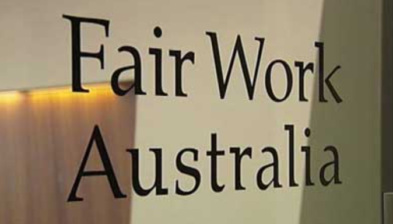Courage under firing: The right way to handle redundancies – HR Monthly
By Alan J. McDonald

McDonald Murholme Principal lawyer Andrew Jewell discusses the legal obligations of employers when it comes to handing out redundancies with HR Monthly.
See below article for further details
Courage under firing: The right way to handle redundancies – HR Monthly
Digital disruption is accelerating the need to not only add new roles to organisations, but also remove established ones. Many employees can now expect to be told at some point in their career that their position is no longer needed. This is removing some of the personal stigma of redundancies, but it is not taking away the pain of losing a position and an income.
Organisations risk creating enormous ill will and harm to their business if they don’t handle the redundancy process properly. British bank Barclays discovered this last year when it axed 100 staff in its Singapore office. The news had leaked earlier, but when Barclays announced the redundancies just before the Chinese New Year holiday, shocked staff went public with complaints about unfair treatment and lack of support.
The damage can snowball
Such public outcries are increasingly common these days. Angry workers can lash out on social media, and news media then amplify this social media reaction, as they did with Barclays’ decision. Displaced employees’ pursuit of legal action for unfair dismissal can keep the issue in the public eye and continue to batter workplace morale.
Worse still, valuable staff may leave an organisation in the wake of poorly handled redundancies. Survivors start updating their resumes in the expectation that they will be treated similarly. Australian Human Resources Institute (AHRI) national president and chairman Peter Wilson cites US research, which found companies that cut 10 per cent of staff typically lose another 25 per cent voluntarily over the next three years. As a result, they can struggle when business picks up. “Taking someone’s job away is a very expensive business,” he warns.
Most importantly, a badly handled redundancy can cause significant psychological damage for the individual on the receiving end of the decision.
“There are more bad examples than good in this space – it’s quite tragic,” says Sandy Hutchison, founder of career development and outplacement consultancy Career Money Life.
Although the pain is far less, it’s not easy on the other side of a redundancy decision either. Hutchison admits she never slept the night before she had to make someone redundant.
Then it happened to her.
Personal experience showed Hutchison how important it is for organisations to be respectful and considerate and to put the employee first. She stayed on good terms with the company that made her redundant, and it consulted with her and let her stay for three months to finish a project. Workplace experts say this sort of early preparation and consultation lets people depart with dignity and prevents brand damage to organisations.
Involving employees
It’s important for employers to know their legal obligations. Andrew Jewell, principal of law firm McDonald Murholme, notes that Australia’s Fair Work Act makes it clear that a redundancy must be genuine, or the result of workplace restructuring, rather than used as another way to fire someone. Companies that can show their planning, how they consulted and tried to redeploy people, and that redundancies were made on workplace grounds and were not discriminatory are more likely to successfully fight a legal challenge, Jewell points out.
However, he observes that legal outcomes are often determined by how employers treat people. Typically, disgruntled employees complain most about lack of consultation and fast exits – about being called in one morning, told their job no longer exists, handed a cardboard box to fill with personal belongings, and then escorted to the door by a guard.
Today, it is considered better practice to offer employees the choice of working out their notice, so they can farewell colleagues and clients and hand over work. By avoiding the walk of shame, this process also lessens the embarrassment and demoralisation of remaining staff.
A more drastic choice is to involve employees in their own redundancy. To many employers, that may sound like risky business, but AHRI’s Wilson argues it can minimise the impact on both employer and employee.
Organisations should be open and transparent, he says, and should not fear to ask for employees’ help if the business is going through a difficult time. Redundancies will be less damaging for the people let go as well as those remaining if the workforce has been involved in the process and has seen management trying to protect employment, he says. Jewell says employees treated this way are less likely to contemplate legal action.
Stuart Taylor, CEO of The Resilience Institute, has a client who began to plan and involve employees in discussions three years ahead of the redundancies. Did it raise the chance that other employees would leave? “That was a potential risk,” he says, “but that position earned them a lot of trust and respect.”
While companies claim to fear alerting their competition, customers or suppliers about plans for change, Wilson believes managers use this as an excuse for fast redundancies “because they lack the courage to face it and do it honestly and decently”.
A version of this story originally appeared in CPA Australia’s INTHEBLACK magazine in November 2016. This article is reproduced as part of the CPA Australia/AHRI cooperation agreement.
Reference: ‘Courage under firing: The right way to handle redundancies’, HR Monthly, 13 January 2017.
-
 High Uni Fees but Academics Underpaid
High Uni Fees but Academics Underpaid -
 Reserve Bank interest rake hike and job losses
Reserve Bank interest rake hike and job losses -
 Labour shortages, inflation, recession looming and workplace disputes
Labour shortages, inflation, recession looming and workplace disputes -
 Paid family and domestic violence leave is to be introduced in Australia: here’s how it affects you
Paid family and domestic violence leave is to be introduced in Australia: here’s how it affects you -
 Virtual assistants; mumpreneurs’ secret weapon
Virtual assistants; mumpreneurs’ secret weapon -
 McDonald Murholme guide to the Fair Work Act – The Australian
McDonald Murholme guide to the Fair Work Act – The Australian